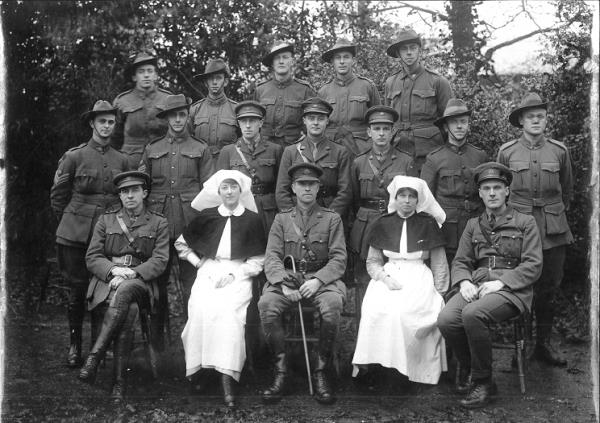By NOEL MURPHY
COLD, hunger, disease, even discrimination by senior officers – the foes faced in war can be much more than deadly shells and bullets delivered by the enemy.
Nurses such as Kitty McNaughton learned early in the Gallipoli campaign that they were almost as much as risk of becoming a casualty as the shot and smashed men they tried to mend.
The Little River woman, who had worked in hospitals at Geelong and Bairnsdale before signing on to the war in 1915, was one of the angels of Lemnos – the island near Gallipoli which fielded the conflict’s casualties – increasingly known at the daughters of Mars.
The tag, from author Tom Keneally’s book of 2012, underscores a fighting spirit that drove women such as Kitty McNaughton to become an extraordinary, if belatedly recognised, figure in Australian military history.
Historian Janet Butler, citing Kit’s own diary, has immortalised that story in another book, Kitty’s War, detailing the tribulations, depredations and achievements of Gallipoli.
Sr McNaughton worked at Cairo, Lemnos and The Somme, where she saw childhood friends killed in the bloody conflict, became ill herself and was transferred to England – before returning to the front.
She was the first theatre nurse to work for the renowned Australian surgeon Colonel Sir Henry Newland and was awarded nursing’s highest decoration, the Royal Red Cross, first class.
“The book follows Kit’s journey through war, from Egypt, where she cared for the Gallipoli sick and wounded, to the harsh conditions of Lemnos Island, off the coast of the Dardanelles, and thence to France and the Somme,” Butler wrote on Nurse Uncut.
“Here she nursed severely wounded German soldiers for the British : ‘my Huns’, as she called them. During Passchendaele, a year later, she ran the operating theatre of a clearing station near the front line.
“Kit finished the war as Australia’s first plastic surgery nurse, assisting the discipline’s pioneers as they repaired the shattered faces of Australian soldiers. On her return home, she married the man she had dreamt about on the way to war – Joe Ryan, a Little River farmer.”
Yet another author, Katrina Hedditch, has detailed the Dardanelles nursing travails in her Lemnos 1915: A Nursing Odyssey to Gallipoli, describing appalling conditions for nurses with food, water or supplies to treat soldiers’ maggot-riddled, gangrenous wounds.
Sr McNaughton’s life-saving work, amid tangles with often-unsympathetic authorities, perhaps depicts as much as any firestorm or battle the Anzac spirit of perseverance, unpretentiousness and cameraderie born out of Gallipoli.
Says Butler: “Researching women has particular difficulties: they are relatively invisible in the official record. The kinds of records we need to turn to are more intimate ones such as letters and diaries.
“These, however, are exactly the kind that allow us to ask the different questions I was trying to answer – about the meaning of war to an individual and its effect upon them – and through them on our society.”







